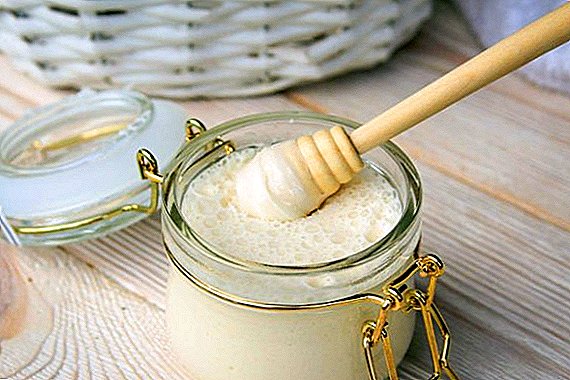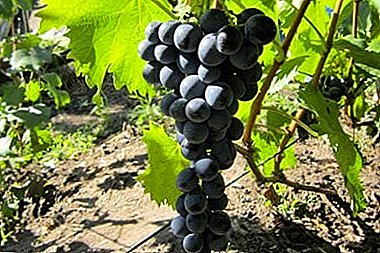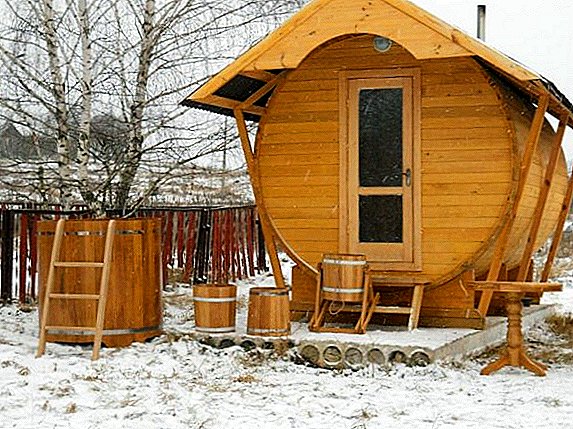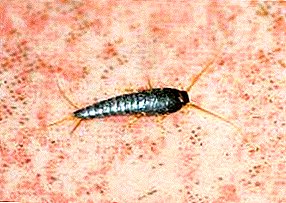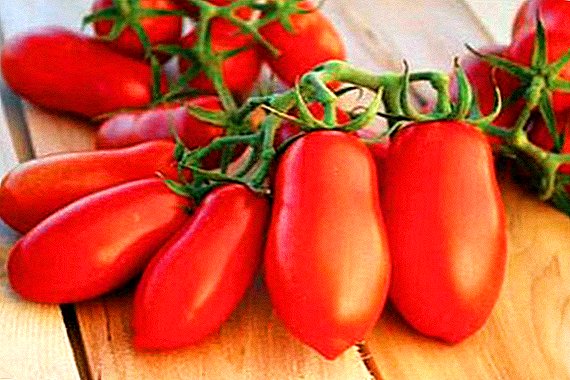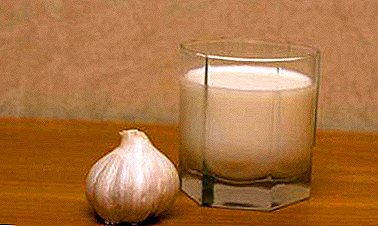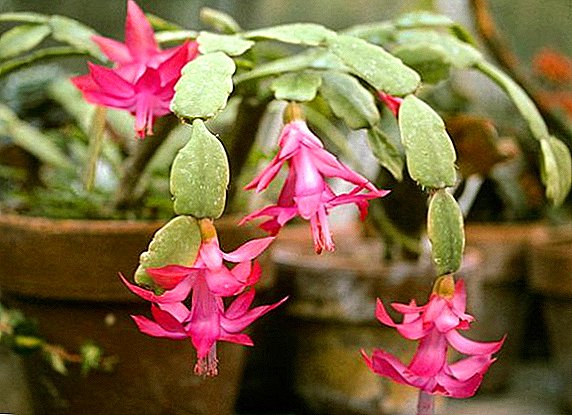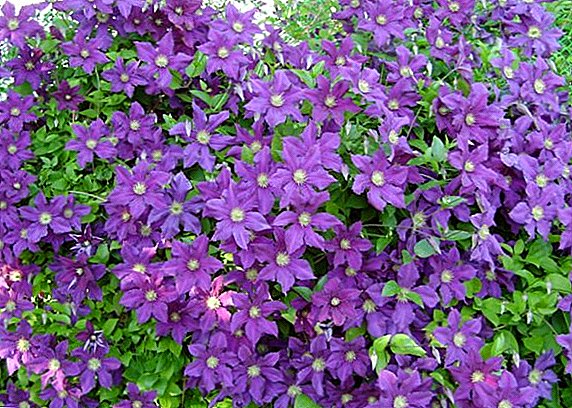 Today we talk about growing clematis in Siberia. Many florists are familiar with this plant, but many believe that the shrub loves an exceptionally warm climate and simply does not grow in northern latitudes. We will prove the opposite, choose the most suitable variety and tell you about the rules of care.
Today we talk about growing clematis in Siberia. Many florists are familiar with this plant, but many believe that the shrub loves an exceptionally warm climate and simply does not grow in northern latitudes. We will prove the opposite, choose the most suitable variety and tell you about the rules of care.
Clematis varieties for Siberia
The natural varieties of clematis are unsuitable for planting in Siberia, therefore, even in the USSR, varieties were bred that can withstand extreme temperatures and cold.
The best varieties of clematis:
Elegy. It has a height of 3 to 3.5 m. The flowers are painted in a light purple color with glimmers of pink. Bud size - up to 15 cm. Grade advantages: not demanding of the soil; tolerates both heat and cold. Feature - requires trimming. 
Luther Burbank. The maximum height is 5 m. The plant is a shrub vine, requires support during planting. Flowers in diameter reach 25 cm, painted in matte-purple color. Pros: long flowering (up to 4 months); resistance to frost (up to -30 ˚C); grows even on infertile soils. Feature - needs regular watering. 
Anastasia Anisimova. Erect shrub. The plant is low, up to 1.5 m in height. Flowers of medium size, diameter - 13-14 cm. The buds are painted in light blue color. Pros: resistant to frost; not affected by fungi; blooms several times a year. Features - belongs to the third group of trimming. 
Hope. The plant is lianoid, has a height of up to 2.5 m. It blooms with bright pink flowers with purple stripes. The diameter of the buds - 15 cm. Pros: unpretentiousness; disease resistance; long flowering period. Features - biennial plant.
 By choosing a plant from the clematis hybrids offered above, you will receive not only a winter-hardy variety, but also a time-tested flower that does not require the ground, which pleases the eye of many florists.
By choosing a plant from the clematis hybrids offered above, you will receive not only a winter-hardy variety, but also a time-tested flower that does not require the ground, which pleases the eye of many florists.
The rules of planting climates in Siberian conditions
When planting clematis in the climatic conditions of Siberia, it is necessary to take into account not only the weather conditions, but also the specifics of the plant itself, which needs to take root in a new place. Therefore, let's talk about the right time and place of landing.
Choosing a place for clematis
If you often plant flowers near the house, you could hear that most of them do not like strong winds, drafts and overmoistened soil. However, in the climatic conditions of Siberia, all these rules acquire the character of axioms.
Clematis should be planted only on the south or southeast side. At the same time the place should be protected from cold winds and drafts. The soil should be dry, if the groundwater is close to the surface - good drainage is required.
It is forbidden to plant a plant on salt marshes or soils with high acidity. Even if you make a sufficient amount of fertilizer, clematis will still die.
The ideal landing place is behind the house or shed on the south side, a meter from the building itself.
 Take care that the bush is illuminated by the sun. Although many varieties tolerate shade, such conditions will inhibit growth and lead to poor flowering.
Take care that the bush is illuminated by the sun. Although many varieties tolerate shade, such conditions will inhibit growth and lead to poor flowering.
Clematis in the climate of Siberia take root only when properly planted, since even the most universal varieties at the initial stage require optimal conditions for rooting.
Preparing a pit for planting
Landing in a dry warm weather. Dig a hole 60x60 cm and lay drainage in the form of pebbles, broken brick or expanded clay on the bottom. Next, fill a part of the hole with fertile soil, which will provide enough nutrients for the plant at the initial stage of development.
Important! In addition to the nutrient soil in the pit can not add peat or humus.
Mix the excavated soil with fertile, add a little dolomite flour and lime. Place the plant in a hole and fill the soil mixture so that it covers the basal neck.
How to plant clematis in Siberia
 Planting is to plan for spring. At the same time, rely on real weather conditions so that the young plant does not freeze.
Planting is to plan for spring. At the same time, rely on real weather conditions so that the young plant does not freeze.
Before planting inspect the rhizome of the flower. Damaged or rotten roots must be removed. Clematis is placed in the hole and straighten the roots so that they occupy the maximum area. After that, they fall asleep with earth and tamp it down. Care should be taken on the sustainability of the bush. For this, the stem is tied up to a support so that the wind gusts do not break it.
After planting, moisten the soil and observe the plant daily.
How to care for a plant in the Siberian garden
When caring for clematis in cold climates it is worth observing the mode of irrigation and fertilizing. Even a small mistake can lead to the fact that the roots of a frost-resistant plant simply freeze out, and clematis itself will die. Therefore, carefully read the instructions and try to follow them.
Did you know? In nature, there are about 300 species of clematis, which can be found on all continents except Antarctica.
How to water clematis
Clematis are demanding on soil moisture, so they need to be watered regularly. At the same time you should not do it on the “automatic machine”, but only if the ground is dry. We advise that in spring and autumn time watering be carried out with warm water so as not to cool the roots.
Important! The plant is forbidden to water in windy weather.
If the moisture evaporates quickly from the ground or goes into the lowland, you can mulch the soil, which will keep moisture in the ground and prevent the weeds from drowning the plant.
When and how to fertilize a plant
 Clematis spends a lot of stocks on growth and flowering. Growing almost half the green mass after pruning each year, the plant loses a tremendous amount of energy, which is replenished by complex supplements like Kemira or Pocon. It should be noted that fertilizers that contain boron and molybdenum, must be applied at the root. It is better to choose fertilizers, which in addition to these elements contain ammonia.
Clematis spends a lot of stocks on growth and flowering. Growing almost half the green mass after pruning each year, the plant loses a tremendous amount of energy, which is replenished by complex supplements like Kemira or Pocon. It should be noted that fertilizers that contain boron and molybdenum, must be applied at the root. It is better to choose fertilizers, which in addition to these elements contain ammonia.
If you want to watch the luxurious blooming of clematis, do not be lazy in the spring sprinkle the soil near the flower with chalk, lime or dolomite flour.
Important! Fertilize the plant you need the whole season.
Siberian Clematis Pruning Rules
Clematis, regardless of the type and variety, require annual pruning. In the description of the species you may have noticed that most of them belong to the third group of pruning. Therefore, let's talk about the specifics of each group and determine the differences.
The first group includes plants whose flowers grow on last year's shoots. It is this fact that determines the force of trimming. The fact is that varieties belonging to this group do not grow even in temperate climates. Therefore, be careful when buying seedlings.
 The second group. On these plants, buds appear both on last year's shoots and on the branches of this year. The types of clematis that belong to this group can be found in temperate latitudes, but they will freeze in the cold. Therefore, they also do not suit us.
The second group. On these plants, buds appear both on last year's shoots and on the branches of this year. The types of clematis that belong to this group can be found in temperate latitudes, but they will freeze in the cold. Therefore, they also do not suit us.
The third group of pruning - flowers appear only on the shoots of the current year. Almost all species that are adapted to the climate of Siberia belong to the third group. The technique of trimming plants of this group is the simplest. It is held in early spring or autumn. Shoots need to be cut, leaving about 30-50 cm above ground level. On each branch, leave three nodes.
The number of buds that you left on the cut shoots depends on the number of flowers and their size (if cut to the very root, the buds will be smaller, but they will be huge).
Important! When trimming herbaceous clematis, the entire aboveground part is removed.
How to care for clematis after flowering
Many owners are interested in how to cover clematis for the winter in Siberia. It is very important to cover the plant in time! After all, if you delay, then its roots may freeze and clematis will die.
 If you did not prune in spring, then after flowering, cut off the shoots and leave the plant until the temperature drops to 0 ° C. After that we roll up the flower by 15-20 cm (depending on the trimming). All actions are carried out only in dry weather so that the green part of the plant does not rot. During the hilling process, pour a mixture of sand and charcoal under the root neck (for 5 kg of sand, 1 l of a bank of charcoal). One bush requires only a kilogram of such a mixture.
If you did not prune in spring, then after flowering, cut off the shoots and leave the plant until the temperature drops to 0 ° C. After that we roll up the flower by 15-20 cm (depending on the trimming). All actions are carried out only in dry weather so that the green part of the plant does not rot. During the hilling process, pour a mixture of sand and charcoal under the root neck (for 5 kg of sand, 1 l of a bank of charcoal). One bush requires only a kilogram of such a mixture.
You can spray the bush "Fundazol" to prevent fungal infections (10 g per 5 liters of water).
If severe frosts are expected, after hilling, cover the bush with a bucket or box and sprinkle it with earth, leaves or humus. Such a shelter is able to withstand temperatures up to -25 - 30 ˚C.
In this preparation of clematis for the winter is completed. It is worth recalling that the snow that has fallen will keep the temperature and prevent the covered plant from freezing, even if the temperature falls below permissible.
Did you know? In Russia, clematis appeared at the beginning of the 19th century as greenhouse plants.
Reproduction of Clematis in Siberia
Each florist, getting an interesting plant, is thinking about multiplying it and planting it in different parts of its garden.
Seed propagation
 Clematis seed propagation is used extremely rarely due to the fact that the young plant does not preserve the species or varietal belongingst. From the seeds will grow "wick", which does not have the same resistance to frost and weather changes, as the parent plant.
Clematis seed propagation is used extremely rarely due to the fact that the young plant does not preserve the species or varietal belongingst. From the seeds will grow "wick", which does not have the same resistance to frost and weather changes, as the parent plant.
For this reason, the reproduction of clematis in Siberian conditions by the generative method is simply impossible. A young plant can die from both cold and lack of sunlight or heat.
Vegetative reproduction of clematis
This method involves several breeding options: cuttings, layering or dividing the bush.
All options will give you a plant that will copy the parent.
The division of the bush. The method is used when the bush has grown strongly or has reached the age of four years or more. Carry out the separation in early spring, before the growth of shoots. In order not to damage the mother bush and at the same time get a viable separated bush, it is necessary to divide it so that there are three buds and a sufficient part of the root system in the detachable part. At the same time it is important that the roots are healthy, and the shoots are not damaged. Further planting and caring for the separated part is the same as for the young seedling.
Reproduction by cuttings. This method is the most popular because it allows you to get a large number of new plants. Cutting cuttings carried out in late June - early August (during the flowering of clematis). For cuttings choose shoots that are in the middle of the bush. After cutting, the shoots must be divided into cuttings 10 cm long. At the same time, a knot should be placed on each cutting at a distance of 4-5 cm from the lower cut (this should be taken into account when cutting shoots). In addition to the node on each handle should be two healthy leaf. After cutting, the twigs are put in a growth stimulator solution overnight (this way you will get more germinated plants). 
After the roots appear, they are transplanted into mini-greenhouses (a flower pot with a handle, covered with a can or film). In the process of rooting the seedling is watered and aired so that the plant grows quickly. Planting cuttings carried out in the spring, when the frost, in dry weather.
Reproduction by layering. This method deals the least damage to the mother plant, since it does not involve the separation of parts in the first stage. To multiply clematis with layering, you need to dig a small ditch near the plant and place an escape in it, sprinkling the ground with the ground. To keep the layering better, you can pin it with straps or press it with stones. Cutting abundantly watered and monitored the progress of germination. Gradually, you need to cover the entire shoot to the top of the ground, so that the cuttings take more roots. Regardless of the time of planting, the layering should be left to winter with the mother plant. In spring, the shoot is separated and transplanted into a separate place. Planting procedure is the same as that of the sapling.
Now you know not only the fact that clematis is taking root in Siberia, but also the basic principles of planting and caring for the plant. By following the rules described, you can grow a beautiful flower on your site.


